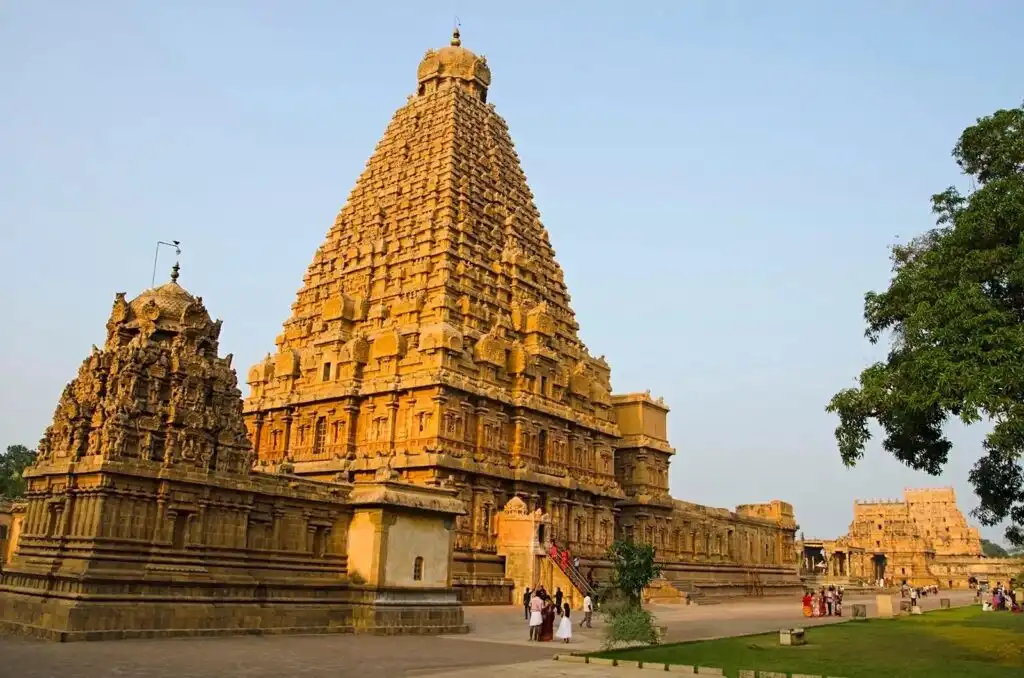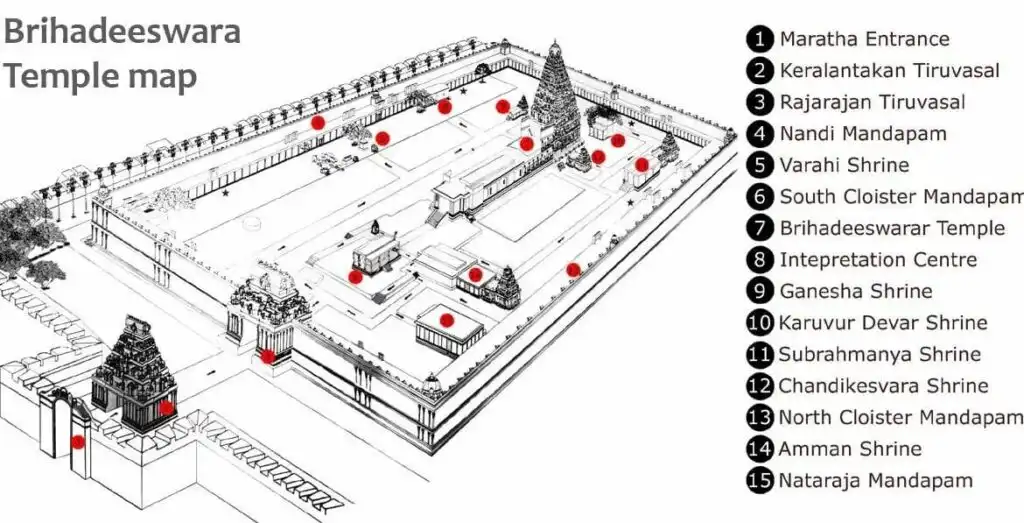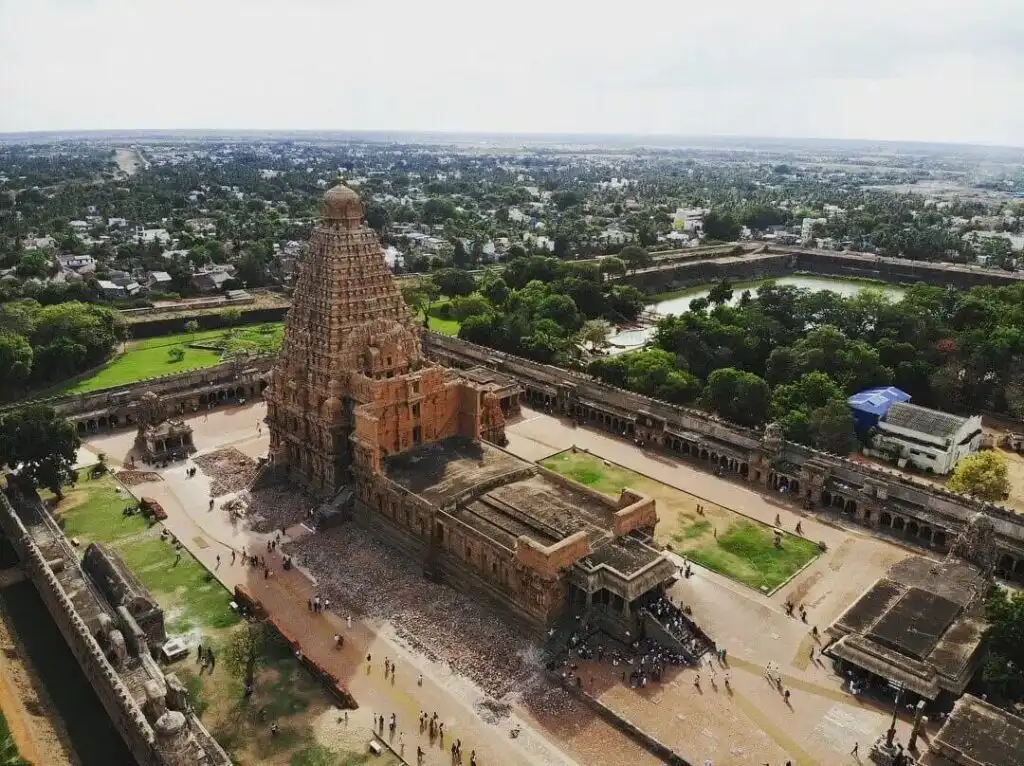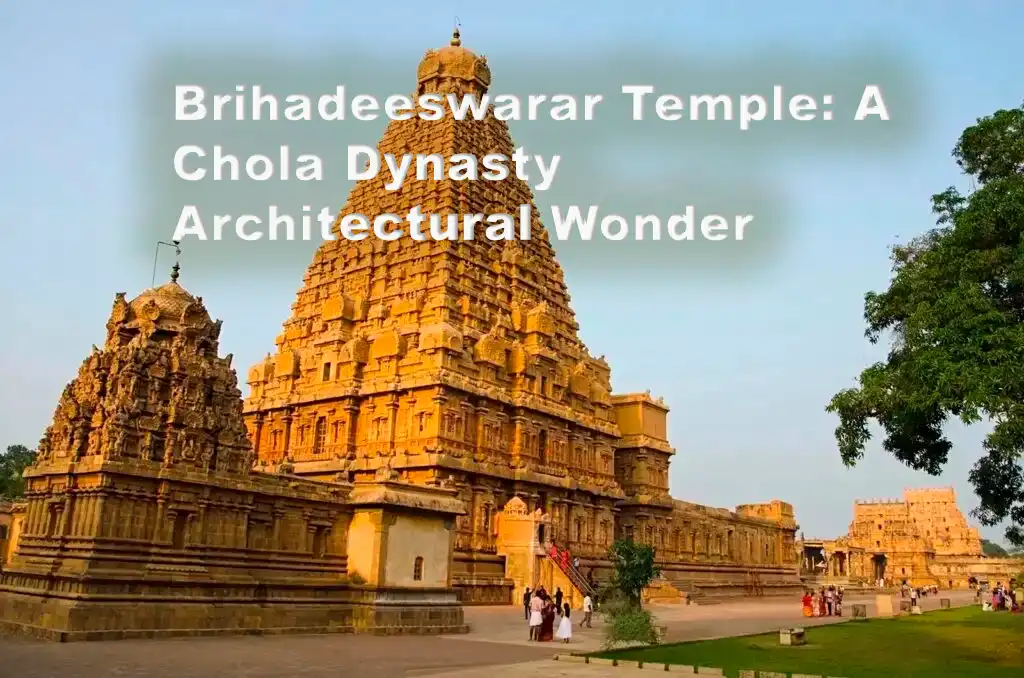Brihadeeswarar Temple: Located in Thanjavur, Tamil Nadu, the Brihadeeswarar Temple, also known as Periya Kovil, is dedicated to Lord Shiva.
It’s one of the biggest Hindu temples ever, man, and a total masterpiece of Tamil and Chola dynasty vibes. This place is all about showing off India’s rich cultural swag and is a UNESCO World Heritage Site.
With its massive size, mind-blowing architecture, and cool innovations, it’s a full-on pride of the nation!
Evolution of History and Culture in Brihadeeswarar Temple
The Brihadeeswarar Temple, built by the OG Chola king Rajaraja I between 1003 and 1010 CE, is a solid flex of mature Dravidian style.
Showcasing centuries of South Indian architectural genius.

Over its epic 1,000-year journey, it’s been through a lot—repairs, tweaks by different dynasties, wars, and even nature’s tantrums. Still, this temple stands tall, rocking its vibe as a major religious and cultural hotspot in Tamil Nadu and all over India!
ALSO READ: Amarakantaks Sacred Secrets
Sacred Symbolism and Unique Features in Brihadeeswarar Temple
The temple is called “Dakshina Meru,” or “Meru of the South,” and it’s like the desi version of Mount Meru, the mythical peak in Hindu stories. Its killer spiritual vibe shines through its grand design.
The coolest flex? The temple’s no-shadow-at-midday trick—yep, that’s some next-level architecture aligned with cosmic stuff! The 216-foot Vimana (tower) totally owns the skyline, and then there’s the massive Nandi statue, carved out of a single rock.
At nine feet tall and thirteen feet long, this bad boy is one of the biggest Nandis in India, symbolizing stability and devotion like a boss!
Architectural Mastery and the Vastu Viewpoint at Brihadeeswarar Temple
Spread out over 240.79 meters east to west and 121.92 meters north to south, the temple complex is pure Chola swag when it comes to proportion and size.
Built like a pro according to Vastu Shastra, its rectangle vibe stands for stability, wealth, and syncing perfectly with cosmic energies.
Fun fact: the temple’s consecration ritual, a total ode to Lord Shiva, happened before the construction even started. Talk about next-level dedication!

The “Puzzle Technique” used in building the Vimana is straight-up genius! They fit interlocking stones together without using any binding stuff like cement—yep, no glue, just brains.
This smart engineering hack keeps the temple rock-solid and earthquake-proof even after all these centuries.
It’s kind of like the tech they used in the Egyptian pyramids, but with a desi twist. Total engineering goals, right?
Cultural Patronage and the Legacy of Art
The temple’s a total hub for Indian classical arts, and you can see it in the detailed carvings on the top floor. It’s got 81 of the 108 dance Karanas from the Natya Shastra—how cool is that?
Scholars are still scratching their heads about why the other 27 Karanas didn’t make the cut. Inside, there’s this massive 29-foot-tall Shiva Linga, one of the biggest in India, taking up two stories! It’s like the ultimate tribute to Lord Shiva’s power and glory.
Plus, there are smaller shrines for other legends like Lord Murugan, Lord Ganesha, Goddess Parvati, and Lord Nataraja. Total divine vibes all around!
Design Symbolism and Defence
Back in 1777, French colonial soldiers got in on the action, throwing up an outer wall with gun holes to defend the temple complex.
This wall wasn’t part of the OG plan—it popped up during a pretty wild chapter in the temple’s history.
Fun fact: there used to be a water moat around the temple. Both for practicality and because, in Hinduism, water’s all about cleansing and good vibes.

The temple’s entrances, like the beautifully carved Rajarajan Tiruvasal and the Maratha Gate, are total throwbacks to different eras. Each gate’s got its own cultural and historical swag, showing off the temple’s epic journey through time.
Symbolism and Numerology
The temple is packed with symbolic vibes, especially around the number nine and its multiples.
Check this out: it’s got 252 Shiva Lingas, 1008 Nandis, nine big pillars in the mandapa, an 81-ton Kumbam (that’s the dome, and yeah, it’s massive), and eighteen Dwarpals (door guardians) holding it down.
All of this comes together to rep spiritual protection and wholeness. The way these elements are tied into the temple’s architecture and spiritual energy is next-level harmony. Total cosmic alignment, desi style!
Conclusion
In a nutshell, the Brihadeeswarar Temple is a total flex of the Chola dynasty’s architectural and cultural genius.
With its grand vibes, mind-blowing engineering, and deep spiritual energy, it’s a timeless icon of ancient Indian architecture and pure Tamil pride.
This temple is all about dedication, skill, and creativity, passed down through the ages, and it never stops leaving people completely awestruck.


